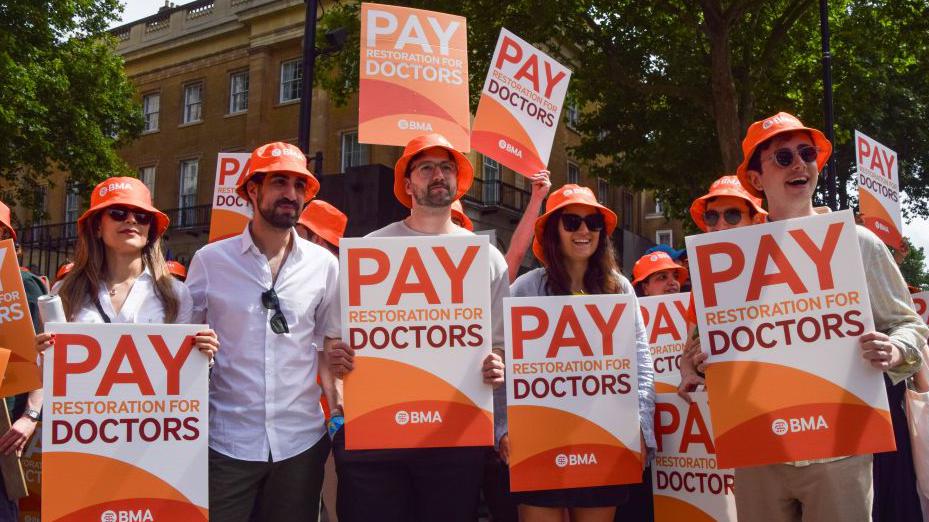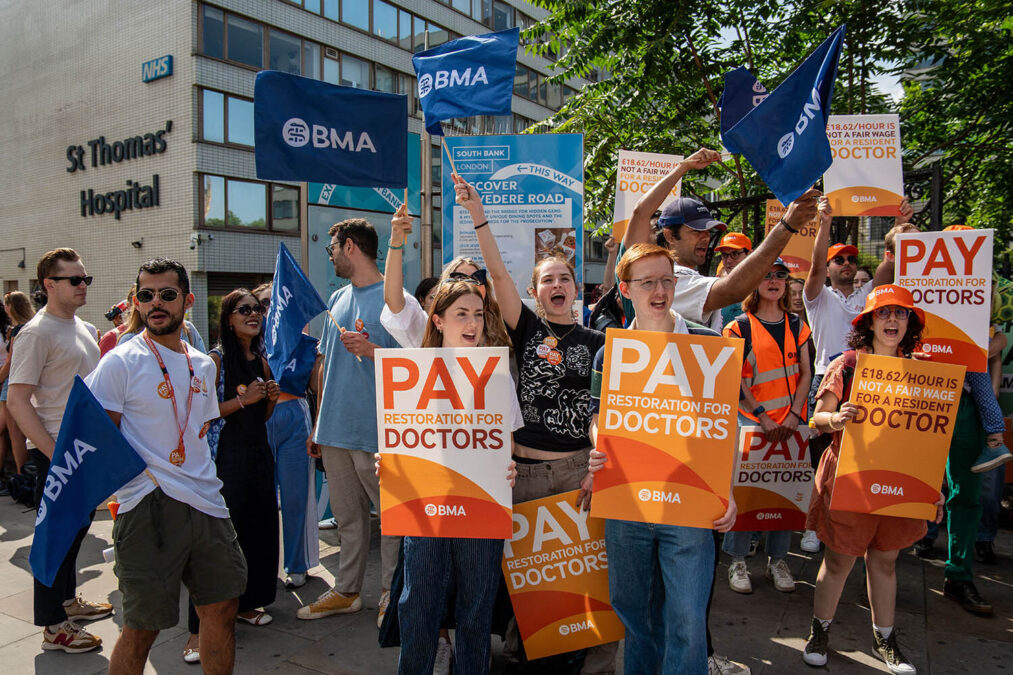The announcement of the resident doctors strikes in November 2025 has reignited concerns about the ongoing crisis within the NHS. Thousands of doctors across England are preparing to walk out for five consecutive days, marking one of the longest periods of industrial action in recent NHS history. The strikes have been organised by the British Medical Association (BMA) after talks with the government broke down once again over pay and working conditions.
The resident doctors strikes are more than just a protest over wages; they represent the culmination of years of growing frustration among healthcare workers. Resident doctors, often working long shifts in challenging conditions, say they feel undervalued and overworked. Their action signals not only a demand for fair treatment but also a desperate plea to address the deeper issues eroding morale and patient care across the NHS.
Understanding the Resident Doctors Strikes
Resident doctors are the backbone of the NHS, playing a critical role in delivering patient care in hospitals and clinics. They handle everything from routine check-ups to emergency surgeries, often working extended hours under intense pressure. Despite their vital role, many resident doctors argue that their pay has failed to keep pace with inflation and living costs, prompting the latest wave of industrial action.
The upcoming resident doctors strikes follow a long series of disputes dating back to 2023. Previous negotiations between the BMA and the government have failed to produce lasting results, leaving many medical professionals disillusioned. This latest strike aims to push the government to take concrete steps toward pay restoration, workforce support, and improved working conditions within the NHS.
Key Details of the November 2025 Strike
The resident doctors strikes are scheduled to take place from 14 to 19 November 2025, lasting five full days. During this period, thousands of resident doctors across England will stage a complete walkout, affecting hospitals, emergency departments, and outpatient services. The BMA has assured that essential and life-saving care will continue, but many routine appointments and procedures are expected to face delays or cancellations.
Health authorities have warned that the strike could cause significant disruption across the NHS, especially given the ongoing staffing shortages. However, the BMA insists that the government has left them with no choice after repeated refusals to meet demands for fair pay. As tensions rise, the November resident doctors strikes are shaping up to be a defining moment in the ongoing struggle between medical professionals and policymakers.
Why Resident Doctors Are Striking Again

At the heart of the resident doctors strikes lies a long-standing pay dispute. Doctors claim that their salaries have eroded by more than 25% over the past decade when adjusted for inflation. Many also highlight the increasing cost of living, housing expenses, and student loan repayments as key factors worsening their financial strain. The government’s recent pay offer was viewed as inadequate and out of touch with the realities faced by healthcare workers.
Beyond pay, the strikes are also about dignity and working conditions. Many resident doctors describe being stretched thin, covering shifts due to staff shortages and dealing with constant exhaustion. Burnout has become a major concern, with some doctors leaving the NHS entirely or seeking work abroad. The resident doctors strikes are therefore not just about pay—they are about protecting the future of the UK’s healthcare system.
Impact on Patients and NHS Services
The resident doctors strikes will inevitably have an impact on patients and NHS operations. Hospitals have already begun rescheduling non-urgent surgeries and consultations to minimise disruption. Patients are being urged to use NHS 111 for advice and only attend A&E in genuine emergencies. Despite these precautions, the five-day walkout will likely add pressure to an already overstretched system.
However, many members of the public sympathise with the doctors’ cause. Opinion polls show growing support for fair pay and better working conditions for NHS staff. While the strikes may cause temporary inconvenience, supporters argue that standing with the doctors today could lead to a stronger, more sustainable NHS tomorrow. The resident doctors strikes have become a symbol of a workforce demanding fairness and respect.
Government and BMA Responses
The government has urged doctors to reconsider their decision, stating that strikes at such a scale could endanger patient care. Officials argue that they have offered reasonable pay increases given the nation’s economic situation. However, the BMA insists that the offer falls short of restoring doctors’ real wages, which have been declining for over a decade.
The BMA’s resident doctors committee has made it clear that the strikes will go ahead unless meaningful negotiations resume. Union leaders have criticised the government for failing to engage constructively, accusing ministers of ignoring the severity of the staffing crisis. The resident doctors strikes, according to the BMA, are the last resort to draw attention to the unsustainable conditions in the NHS.
The Future of Industrial Action in Healthcare
The resident doctors strikes could set the tone for future industrial action within the NHS. With nurses, consultants, and other staff also voicing frustration, the healthcare sector appears to be approaching a critical turning point. Without substantial change, further strikes and staff departures seem likely, posing a long-term threat to the NHS’s ability to function effectively.
Experts suggest that the government needs to adopt a more holistic approach to resolving these disputes. Beyond pay, this includes addressing workforce shortages, investing in staff wellbeing, and modernising NHS infrastructure. The resident doctors strikes could, in hindsight, be remembered as the moment that forced the government to take the voices of healthcare professionals seriously.
Conclusion: A Defining Moment for the NHS
The resident doctors strikes in November 2025 represent more than a battle over salaries—they symbolise the broader fight for fairness, respect, and sustainability within the NHS. As the five-day walkout looms, both the government and the BMA stand at a crossroads, with the future of the healthcare system hanging in the balance.
This moment offers an opportunity for change. If handled constructively, it could pave the way for a stronger partnership between the government and medical professionals. However, if ignored, the resident doctors strikes may be remembered as a warning that went unheeded—one that signalled a deeper crisis in the heart of the NHS.
FAQs: Resident Doctors Strikes in the UK
Q: When will the resident doctors strikes take place?
The strikes are scheduled from 14 to 19 November 2025 and will last for five consecutive days across England.
Q: What services will be affected?
The strikes will affect hospitals, emergency departments, and outpatient clinics, though essential care will continue.
Q: Why are resident doctors striking again?
Doctors are demanding fair pay restoration, improved working conditions, and recognition of their vital role in the NHS.
Q: How can patients check if their appointments are impacted?
Patients should contact their local NHS Trust or GP practice for updates and rescheduling information.
Q: Could the strikes extend beyond November 2025?
If negotiations fail to progress, the BMA has warned that further industrial action could follow in the coming months.
You may also read: Shoe Zone Store Closures 2025: Full List of 39 Shops Shutting Across the UK


